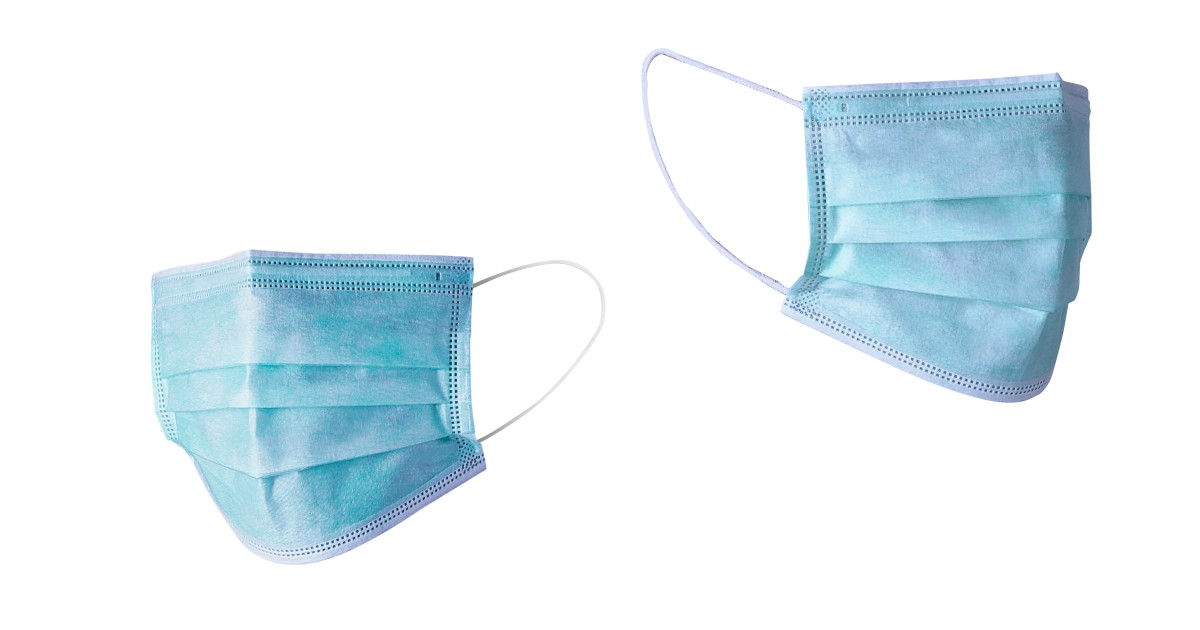
The 15 Best Master's Degrees for High-Paying Jobs
Before you start on grad school applications, consider the salary [...]

A little bit Florence Nightingale, a little bit MacGyver, flight nurses fly the friendly skies with patients who need acute trauma or inter-facility transport. Do you want to work with the sickest patients in high-stakes circumstances thousands of feet up? Then keep reading to find out what it takes to become a flight nurse.
Nurses don’t just work in hospitals and other medical facilities. You can also find them in helicopters and airplanes, providing care for patients who need to get to the nearest—or the best possible—hospital as quickly as possible. These flight nurses (also known as air medical flight nurses or air ambulance nurses) spring to action whenever an ambulance isn’t fast enough or can’t go far enough. Any time a patient is airlifted to a medical facility from the scene of an accident or an acutely patient is transferred to a faraway hospital, a flight nurse is there next to them, seamlessly administering whatever care is needed to keep them stable and safe throughout the journey.
Sometimes that involves providing supportive care and monitoring a patient to make sure they aren’t reacting negatively to the stresses of air travel. And sometimes, it means doing everything possible to keep a very sick or acutely injured patient alive and as stable as possible until they reach a hospital. Flight nurses are not novice RNs, but rather seasoned emergency nurses who have proven themselves in both ICUs and ERs. They work in cramped quarters with critical patients, and they’re responsible for flight safety on top of everything else they do.
Sound exciting? Treating patients while turbulence rocks the ambulance or copter rotors chop at the air at an incredible volume isn’t for everyone, but if you love a good adrenaline rush, this might just be your specialty. In this article about how to become a flight nurse, we’ll cover:
A flight nurse is a registered nurse who specializes in comprehensive pre-hospital emergency nursing and transport care aboard propeller aircraft, jet aircraft, and helicopters. Much like ER nurses and ICU nurses, flight nurses care for all kinds of patients, from delicate premature newbornst to the critically ill elderly to severely injured people of all ages.
The biggest difference is that they’re on call for aeromedical evacuation and rescue operations and facility-to-facility transports. Flight nurses don’t work alone, however. Whether on the ground or in the air, a flight nurse usually works with flight medics and med flight physicians. Sometimes an air ambulance crew also includes respiratory practitioners and other specialists.
On any given day, a flight nurse might care for critically injured patients being airlifted from the site of an accident to a hospital’s trauma center, acutely ill patients being transported from small regional medical facilities to metro-area hospitals with specialized care services, or newborns that need specialized intensive-care services that aren’t available at the facilities where they were born.
As you might guess, the US military employs flight nurses. Some of the first official flight nurse training programs were developed by the Air Force during World War II. But patients were being transported by air off of battlefields long before that. In 1870, during the Siege of Paris, wounded soldiers were airlifted to medical facilities in hot air balloons.
The first designs for an air ambulance were developed in 1910, and the first documented air ambulance mission took place during World War I when British forces in Turkey took an injured soldier from the battlefield to a hospital in a De Havilland DHH. In the 1920s, many official and unofficial air ambulance corps took flight. In 1933, pilot Loretta Schimmoler—the mother of modern flight nursing and the first flight nurse—founded the Emergency Flight Corps (later called the Aerial Nurse Corps of America). Her organization served as a model for the US Air Force Flight Nurse Corps and all modern flight nursing.
Like all registered nurses, flight nurses are responsible for keeping injured and ill patients stable and safe by:
Unlike most RNs, they’re not doing it in a tightly controlled environment. The inside of an air ambulance is well-stocked, and everything has its place, but there are many factors you can’t control in the air:
Flight nurses also have additional duties:
While you only need RN credentials and ER or ICU experience to become a flight nurse, you will likely be called upon to work autonomously in this job. You may not always be on a med flight with a supervising physician, and there will be times when you’ll have to make the kinds of decisions about how to treat patients that are usually reserved for advanced practice registered nurses.
This is a job for people who are energized by fast-paced, highly variable work. If you’re looking for a career in nursing that’s the same day in and day out, this isn’t it. Flight nurses need to be comfortable making decisions quickly in demanding conditions, treating patients in non-clinical conditions and in the air, and doing a lot with limited resources. Flight nursing is very different from being an RN in a 30-bed emergency department with relatively large rooms and an even larger supply closet.
Step one is becoming an RN, which for now means getting either an Associate Degree in Nursing (ADN) or a Bachelor of Science in Nursing (BSN). Some states have already put in place rules that require full-fledged RNs (as opposed to LDNs) to hold a bachelor’s degree, and many employers in air medical transport prefer job candidates with BSNs or even Master of Science in Nursing (MSN) degrees. Your best bet is probably to go straight for a BSN.
What you won’t find almost anywhere are nursing programs tailored specifically to aspiring flight nurses. You don’t actually need an advanced nursing degree or specialty aeromedical training to become a flight nurse. Still, if you want to pursue higher education, there is one formal training program out there. Case Western Reserve University‘s Dorothy Ebersbach Academic Center for Flight Nursing offers an MSN major in Flight Nursing Education in partnership with Cleveland Clinic’s Critical Care Transport and MetroHealth Medical Center’s Metro Life Flight.
The best thing you can do when looking at nursing schools is to make sure that every program you’re considering is accredited by either the American Association of Colleges of Nursing (AACN) or the National League for Nursing (NLN). Getting your degree from an accredited program is extremely important because you may have trouble pursuing certain certifications necessary for flight nurses if you graduate from an unaccredited program.
Once you’ve earned your ADN or BSN, you won’t be able to practice nursing legally until you’ve passed the National Council Licensure Examination (NCLEX-RN) exam. You should also look at every school’s NCLEX-RN exam pass rates because that will tell you a lot about the quality of the program.
Earning a degree and getting your RN license isn’t all you need to do to become a flight nurse, however. Step two is getting three to five years of experience working in critical patient care nursing or emergency nursing. This is where you’ll hone the skills that will help you care for sick and injured patients in the field and during difficult transport missions. To find work in the ER or ICU, you’ll need certain basic nursing certifications, including the Basic Life Support certification and the Advanced Cardiovascular Life Support.
While you’re amassing professional experience in the ER or ICU, you can become a Certified Flight Registered Nurse through the Board of Certification for Emergency Nursing (BCEN). While the BCEN recommends nurses wait to take the exam until they have two or more years of experience in a specialty area, the only qualifications required to take the exam are a current, unrestricted nursing license.
That’s not the only certification you’ll need to become a flight nurse, though. As noted above, flight nurses take on a lot of responsibility, and they have the credentials to back up that autonomy. Flight nurses often have certifications and credentials like:
Just because you’re a registered nurse and you’ve passed the Certified Flight Registered Nurse exam doesn’t mean you’re ready to fly. Providing nursing care within the confines of a helicopter or plane means thinking about patient safety and flight safety. When you’re hired as a flight nurse, your employer will provide or help you get whatever additional training is necessary for you to do your job safely in an aircraft. Every employer has its own standards for flight nurses, but you’ll usually receive training in:
You can get a jump on this training and possibly make yourself a more attractive job candidate by attending conferences like the Critical Care Transport Medicine Conference and Air Medical Transport Conference. Additionally, some states require flight nurses to be certified as EMTs or EMT-Ps, so you may also want to look into how to become an EMT. Be sure you understand the regulations in the state where you’ll work so you can get whatever additional training and certifications are necessary to get this job.
Speaking of getting jobs, two places you can go to get a feel for what’s out there and what employers are looking for are the Association of Air Medical Services and the Air and Surface Transport Nurse Association
The quick answer is that the average flight nurse salary is about $70,000 per year. That said, with experience, more education, and the right specialty certifications, you could make up to $100,000 per year. That’s not much more than the highest-paid RNs get. Making more money in nursing is usually a matter of getting an MSN and becoming a nurse practitioner.
To find your answer, mull over the following questions.
Those last two questions are particularly important. Chances are you wouldn’t be looking into what it takes to become a flight nurse if you were scared of flying or you’re looking for a low-key nursing position, but you may not have considered that a medical transport team may be just two or three people. When things go sideways, you’ll need to figure out what to do in the air, and you won’t necessarily be able to consult with an attending physician. You’ll need to make decisions fast, and you won’t always be able to reach anyone for an outside consult. If you’re not comfortable with that kind of autonomy, this probably isn’t the role for you.
But if you love the idea of employing your nursing skills in an environment that can be even more hectic and unpredictable than the ER, you might just love flight nursing.
(Last Updated on February 26, 2024)
Questions or feedback? Email editor@noodle.com

Before you start on grad school applications, consider the salary [...]

Whether you have hopes of specializing, climbing the ranks, or [...]

Your coworkers may not look like George Clooney, but the [...]

If you've ever thought about a nursing career, there are [...]
Categorized as: Medicine, Nursing & Healthcare